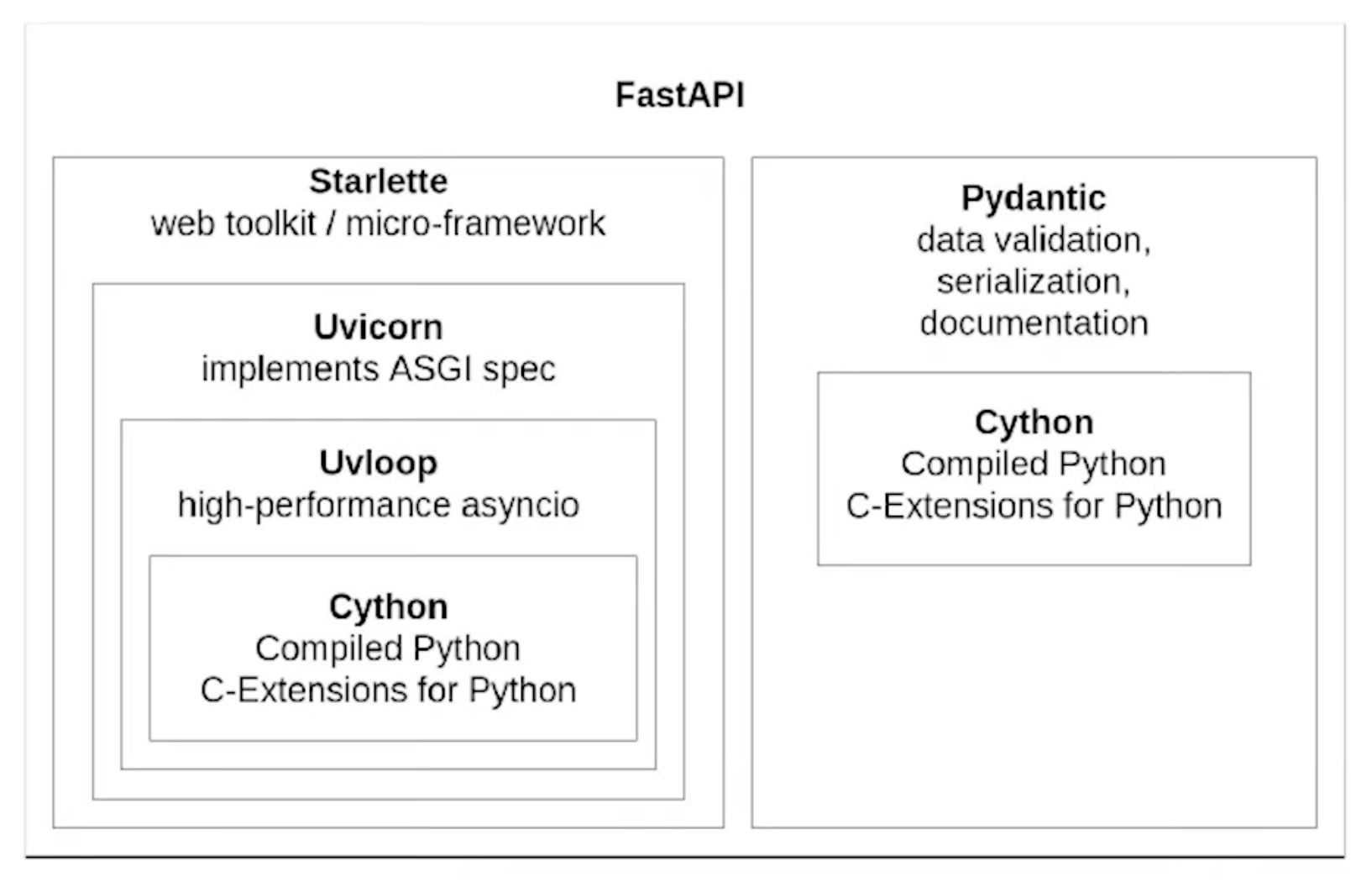2.3. FastAPI Architecture
Uvicorn
Starlette
Pydantic
Type Annotations

2.3.1. Standard WSGI
WSGI - Web Server Gateway Interface
2.3.2. Standard ASGI
ASGI - Asynchronous Server Gateway Interface
ASGI (Asynchronous Server Gateway Interface) is a spiritual successor to WSGI, intended to provide a standard interface between async-capable Python web servers, frameworks, and applications.
Where WSGI provided a standard for synchronous Python apps, ASGI provides one for both asynchronous and synchronous apps, with a WSGI backwards-compatibility implementation and multiple servers and application frameworks.
2.3.3. Uvicorn
Uvicornis a lightning-fast ASGI server implementation, usinguvloopandhttptools.Until recently Python has lacked a minimal low-level server/application interface for asyncio frameworks. The ASGI specification fills this gap, and means we're now able to start building a common set of tooling usable across all asyncio frameworks.
ASGI should help enable an ecosystem of Python web frameworks that are highly competitive against Node and Go in terms of achieving high throughput in IO-bound contexts. It also provides support for HTTP/2 and WebSockets, which cannot be handled by WSGI.
Uvicorn currently supports HTTP/1.1 and WebSockets. Support for HTTP/2 is planned.
Source: [1]
2.3.4. Starlette
Starletteis a lightweight ASGI framework/toolkit, which is ideal for building high performance asyncio services.It is production-ready
Seriously impressive performance
WebSocket support
GraphQL support
In-process background tasks
Startup and shutdown events
Test client built on requests
CORS, GZip, Static Files, Streaming responses
Session and Cookie support
100% test coverage
100% type annotated codebase
Zero hard dependencies
Source: [3]
2.3.5. Pydantic
Data validation and settings management using python type annotations.
pydanticenforces type hints at runtime, and provides user friendly errors when data is invalid.Define how data should be in pure, canonical python; validate it with pydantic.
There's no new schema definition micro-language to learn
pydantic's BaseSettings class allows pydantic to be used in both a "validate this request data" context and in a "load my system settings" contextIn benchmarks pydantic is faster than all other tested libraries
validate complex structures
pydanticallows custom data types to be defined or you can extend validation with methods on a model decorated with the validator decorator.dataclassesintegration
Source: [2]